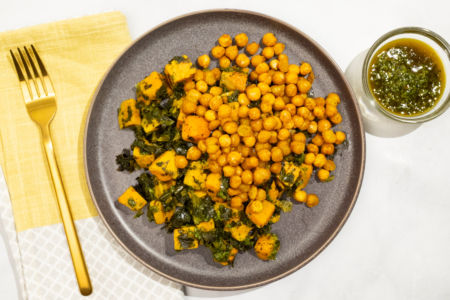Sometimes referred to as “Pharoah’s Wheat”, this ancient grain is believed to have originated in Egypt. Yet, another name points to an alternative origin story hailing from north eastern Iran where this ingredient is called “Khorasan Wheat”. However it came to be, this whole grain not only stood the test of time, but it also brought a healthy bonus as well, boasting a high amount of protein (about 30% more than some other whole grains). And while it’s not gluten-free, this grain has gained popularity as a wheat alternative with some people who are allergic to wheat citing a tolerance to kamut. Try looking for kamut in your local health food stores.
Flavor and Texture of Kamut
Coming in at about three times bigger than most grains, this ancient grain makes for a hearty addition to any meal. It has a subtly nutty flavor that’s not as strong as some other whole grains. This makes it a perfectly suitable substitute when you want the characteristic chewy bite but with a lighter flavor. Let kamut take over your kitchen and experiment with it in flour form or pick up some kamut cereal for breakfast.
Storage and Usage of Kamut
To keep your kamut fresh, store in a cool, dry, dark place, such as in an airtight container in the pantry. Have fun experimenting with this versatile grain and try it in soups, salads, or as a tasty side dish. Give our Summer Green Bean Salad a go and use an equal amount of kamut instead of the wheat berries. Or swap out the barley in our Beef and Barley Soup for an easy introduction to this grain. Start your day off on the right foot and make this Ancient Grain Breakfast Bowl with some added kamut.
Feature Image: Flickr user forest-and-kim (CC BY 2.0)



